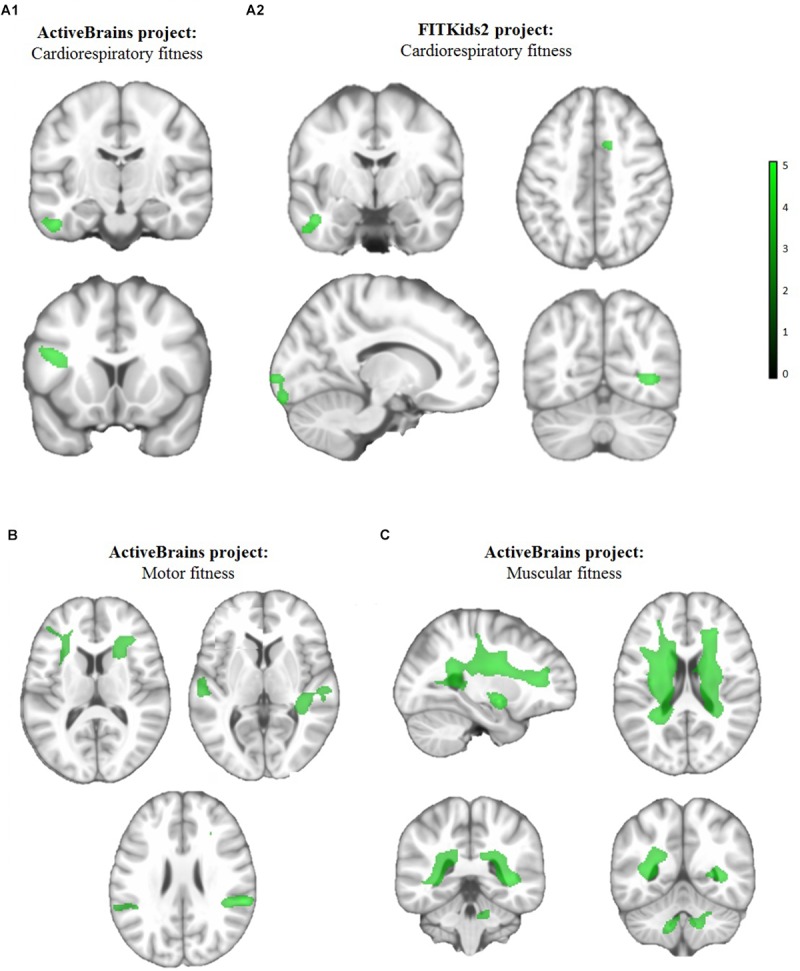FIGURE 1.

Brain regions showing positive separate associations of (A1, A2) cardiorespiratory fitness, (B) motor fitness and (C) muscular fitness with white matter volume in children from the ActiveBrains (A1,B,C) and FITKids2 (A2) projects. Analyses were adjusted by sex, peak height velocity offset (years), parent education university level (neither/one/both) and body mass index (kg/m2). Each physical fitness component was introduced in separate models. Maps were thresholded using AlphaSim at P < 0.001 with k = 177 voxels for cardiorespiratory fitness in the ActiveBrains project and k = 117 voxels in the FITKids2 project, k = 173 for motor fitness, and k = 191 for muscular fitness, and surpassed Hayasaka correction (see Table 2). The color bar represents T-values, with lighter green color indicating higher significant association. Images are displayed in neurological convention, whereby the right hemisphere corresponds to the right side in coronal displays. Sagittal planes show the left hemisphere.
